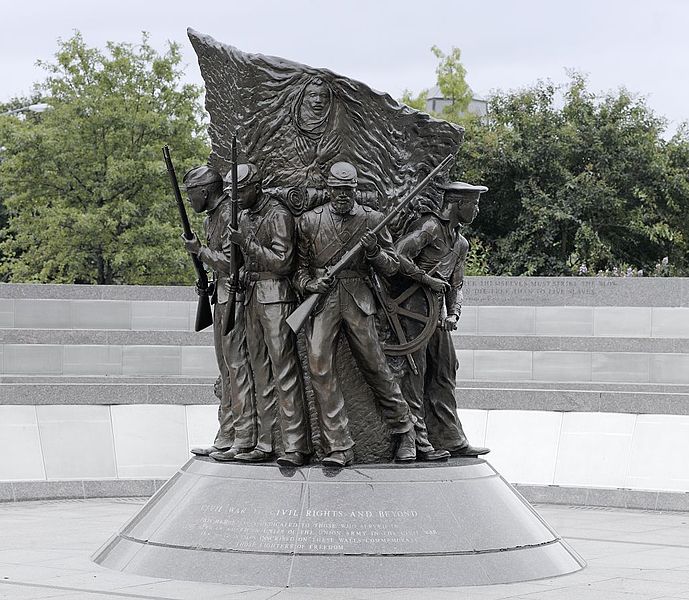 Abraham Lincoln has been called “The Great Emancipator” for the Emancipation Proclamation during the Civil War. The Proclamation, and his role in promoting the 13th Amendment so eloquently displayed in the Steven Spielberg’s movie, Lincoln, secured Lincoln’s recognition for ending slavery in America. And yet, some have argued that Lincoln was “forced into glory” and that he was a reluctant emancipator. These claims are without merit. In fact, Lincoln was an active emancipator and completely consistent in his beliefs about slavery and how to overcome the constraints on its removal from American society.
Abraham Lincoln has been called “The Great Emancipator” for the Emancipation Proclamation during the Civil War. The Proclamation, and his role in promoting the 13th Amendment so eloquently displayed in the Steven Spielberg’s movie, Lincoln, secured Lincoln’s recognition for ending slavery in America. And yet, some have argued that Lincoln was “forced into glory” and that he was a reluctant emancipator. These claims are without merit. In fact, Lincoln was an active emancipator and completely consistent in his beliefs about slavery and how to overcome the constraints on its removal from American society.
Lincoln first encountered slavery as a child in Kentucky. While only seven years old when the family moved to the free state of Indiana—partly on account of slavery—Lincoln was already aware that black people were treated differently than white people. The Baptist church was splitting into pro-slavery and anti-slavery branches; his family adamantly followed the northern anti-slavery route. Though still very young, he knew that slavery existed and it was somehow wrong.
Jump forward to 1837. Twenty-eight-year-old Lincoln is now a state legislator in Illinois. As with many free states, Illinois was being pressured by slaveholding states to ban abolitionist societies and criminalize anti-slavery “agitation.” The bill passes overwhelmingly, 95-6. Lincoln is one of the six and decides to write a protest to explain his vote. He and fellow legislator Dan Stone lay out their beliefs:
- The institution of slavery is founded on both injustice and bad policy.
- But, abolition doctrines increase rather than abate its evils.
- Congress has no power to interfere with slavery in the states.
- But, Congress does have the power to abolish slavery in the District of Columbia.
These four principles lay out Lincoln’s positions on “the peculiar institution.” He remains consistent with these principles his entire career. In short, he believes slavery is immoral and ought to be ended. The question is how to accomplish this goal. He felt that the abolitionist tendency to demonize slaveowners put them on the defensive, thus making it harder to get them to free the men and women they held in slavery. Additionally, abolitionists wanted Congress to arbitrarily ban slavery in the states in which it still existed, an unconstitutional act that would invite a pro-slavery Supreme Court to strike down the legislation and damage other attempts to convince slaveholding states to end enslavement. But, Lincoln said, Congress does have authority over federal territories such as the District of Columbia and the substantial acquired lands from the Louisiana Purchase and the war with Mexico. These principles guided his path forward.
In 1849 Lincoln was a U.S. Congressman. While most freshman congressmen are instructed to sit in the back of the room, keep their mouth shut, and vote the way they are told, Lincoln decided to draft a bill to emancipate the slaves in the District of Columbia, consistent with his beliefs a dozen years before in Illinois. Initial support for the bill fell through after slaveholding powers pressured fellow legislators, so he was forced to withdraw the bill before introduction. His first attempted toppled domino.
Flash forward another baker’s dozen years. As President in 1862, Lincoln worked with Congress to produce and sign the DC Compensated Emancipation Act. The Act immediately freed approximately 3,100 enslaved African Americans in the District. The first domino had finally fallen. But Lincoln didn’t stop there. He repeatedly encouraged the four border states (Missouri, Kentucky, Maryland, Delaware)—slave states that had remained in the Union—to voluntarily enact state laws ending slavery, similar to what had just been done in the District. Lincoln even persuaded Congress to cover the cost of owners’ compensation. Despite several attempts by Lincoln to convince them, the border states rejected his efforts. These dominos remained standing.
Lincoln still wasn’t finished. Over the summer of 1862 he continued to explore every option he could find; more dominos. In August he responded to influential New York Tribune editor Horace Greeley with a now famous public letter outlining how he would save the Union. “If I could save the union without freeing any slaves I would do it; and if I could save it by freeing all the slaves I would do it; and if I could save it by freeing some and leaving others alone I would also do that.” These words have been twisted by some to suggest Lincoln only reluctantly freed the slaves, but the opposite is true. Lincoln had already drafted the Emancipation Proclamation, holding only for a Union victory to release it. His letter to Greeley prepared the public to accept his actions.
When he did release the Proclamation, it was entirely consistent with his views expressed years ago in Illinois. Congress, he said then, was constitutionally restricted from banning slavery in the states in which it existed. But, he argued, the Constitution gave him, solely in his role as Commander-in-Chief during a time of insurrection, the power to take whatever steps were deemed a military necessity to protect and save the Union. This is why the Proclamation is rather dry language; it’s a legal document, a military order, because that is the only authority Lincoln had at his disposal. By freeing the slaves only in those areas in rebellion—the border states remaining in the Union could not be touched because of the Constitution—Lincoln could remove the assistance enslaved men were forcibly providing to Confederate troops while increasing the number of Union troops available to fight. Indeed, up to 50,000 men held in bondage were freed immediately, with many more gaining their freedom as they escaped into encroaching Union lines. Meanwhile, close to 200,000 African American men, many of them having newly gained their freedom, fought gallantly for the Union Army and Navy. Not only had more dominos fallen, they had begun exerting greater force.
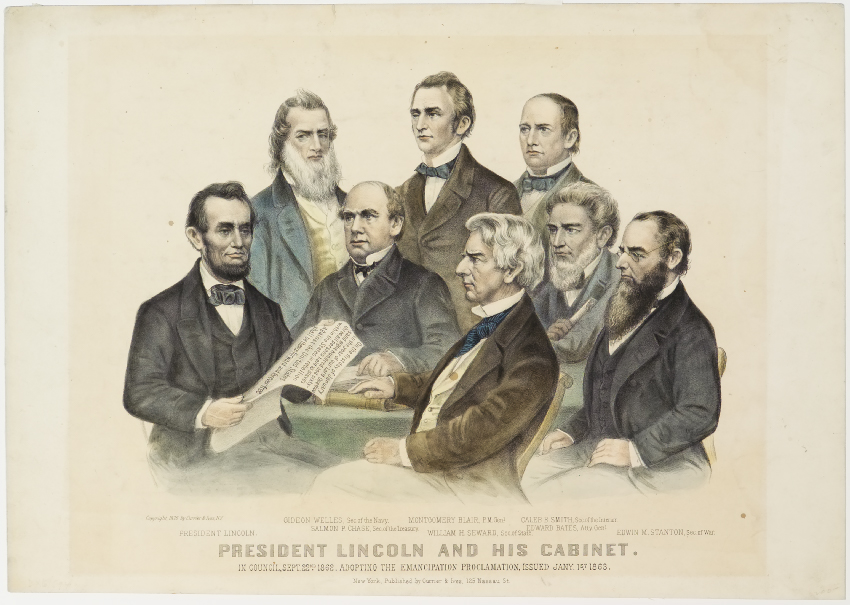
Again, Lincoln wasn’t finished. During 1863 and 1864 he continued to tip dominos as Union armies regained control of southern states. He sent former Senator Andrew Johnson, the only member of Congress to remain with the Union when his state seceded, back to Tennessee as a military governor. Lincoln did the same with North Carolina and Louisiana, slowly pushing to reconstruct them back into the Union, yet always working every option within the constraints of the Constitution. Understanding that the Emancipation Proclamation would become moot once the war ended, Lincoln worked with Congress to amend the Constitution. The Senate passed the bill on April 8, 1864. Shortly thereafter the House voted in the majority, but short of the two-thirds needed to pass an amendment, setting the stage for Spielberg’s epic film. Lincoln worked throughout 1864 both for his own prospects and the success of Republicans in the November elections. Finally successful pushing the House over the line on January 31, 1865, Lincoln knocked over another domino in his quest for permanent African American freedom.
Sadly, the last domino he tried to tip would become the rationale for his murder. On April 11, 1865, Lincoln made a speech from the White House window on reconstruction, using Louisiana as an example because it was furthest along the process. Lincoln had privately encouraged the state to include African American suffrage in its new constitution, which it failed to do. On this fateful night Lincoln publicly asserted for the first time. “It is also unsatisfactory to some that the elective franchise is not given to the colored man,” he said, adding that “I would myself prefer that it were now conferred on the very intelligent, and on those who serve our cause as soldiers.” John Wilkes Booth was among the crowd on the White House lawn who heard these words. It would stir him to assassinate Lincoln four days later.
Abraham Lincoln deserves the sobriquet “Great Emancipator.” He was not reluctant in any way. Indeed, he was utterly consistent in this lifelong belief that slavery was wrong but the Constitution prohibited Congress from banning it where it existed. Congress could, however, ban slavery in the District of Columbia and federal territories in accordance with the Constitution, which it did under Lincoln. All of the northern states ended slavery within their boundaries by state law, so Lincoln encouraged the four border states to do the same (Maryland would become the first border state to end slavery in November 1864, followed by Missouri in January 1865). The Emancipation Proclamation was also consistent with Lincoln’s unique powers as Commander-in-Chief in time of war. Permanent emancipation occurred by amending the Constitution, again, consistent with the founding document and the principles outlined by Lincoln back in Illinois.
The Emancipation Proclamation could have occurred only during a time of war, and Lincoln used it as one more tool to set the dominos in motion toward ultimate freedom for all. And as Lincoln understood, each domino toppling can exert enough power to tip an even bigger domino, growing in intensity and power until great things happen. Each of us has the power to exert our forces for the greater good. I encourage all of us to do so.
[The above was published in The Lincolnian November 2020 issue and is based on a presentation I gave on September 5, 2020 for the Rock Creek Civil War Roundtable. The Lincolnian is sent to all Lincoln Group of DC members.]
David J. Kent is an avid traveler, scientist, and Abraham Lincoln historian. He is the author of Lincoln: The Man Who Saved America, Tesla: The Wizard of Electricity and Edison: The Inventor of the Modern World as well as two specialty e-books: Nikola Tesla: Renewable Energy Ahead of Its Time and Abraham Lincoln and Nikola Tesla: Connected by Fate.
Check out my Goodreads author page. While you’re at it, “Like” my Facebook author page for more updates!
Like this:
Like Loading...
 I will be giving a presentation on April 13, 2022, titled “Lincoln’s Role in the DC Emancipation Act of 1862.” The presentation is part of a series of events in commemoration of the 160th Anniversary of DC Emancipation, an Act signed into law on April 16, 1862, by President Abraham Lincoln. The events are sponsored by the District of Columbia and Mayor Muriel Bowser’s DC Emancipation Day Commemoration Commission. The presentation week will culminate in the annual Emancipation Day parade.
I will be giving a presentation on April 13, 2022, titled “Lincoln’s Role in the DC Emancipation Act of 1862.” The presentation is part of a series of events in commemoration of the 160th Anniversary of DC Emancipation, an Act signed into law on April 16, 1862, by President Abraham Lincoln. The events are sponsored by the District of Columbia and Mayor Muriel Bowser’s DC Emancipation Day Commemoration Commission. The presentation week will culminate in the annual Emancipation Day parade.


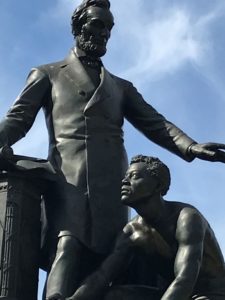 As part of my series on Confederate monuments I recently examined
As part of my series on Confederate monuments I recently examined  Abraham Lincoln has been called “The Great Emancipator” for the Emancipation Proclamation during the Civil War. The Proclamation, and his role in promoting the 13th Amendment so eloquently displayed in the Steven Spielberg’s movie, Lincoln, secured Lincoln’s recognition for ending slavery in America. And yet, some have argued that Lincoln was “forced into glory” and that he was a reluctant emancipator. These claims are without merit. In fact, Lincoln was an active emancipator and completely consistent in his beliefs about slavery and how to overcome the constraints on its removal from American society.
Abraham Lincoln has been called “The Great Emancipator” for the Emancipation Proclamation during the Civil War. The Proclamation, and his role in promoting the 13th Amendment so eloquently displayed in the Steven Spielberg’s movie, Lincoln, secured Lincoln’s recognition for ending slavery in America. And yet, some have argued that Lincoln was “forced into glory” and that he was a reluctant emancipator. These claims are without merit. In fact, Lincoln was an active emancipator and completely consistent in his beliefs about slavery and how to overcome the constraints on its removal from American society.
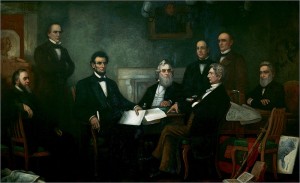 On July 22, 1862, Abraham Lincoln presented the draft
On July 22, 1862, Abraham Lincoln presented the draft 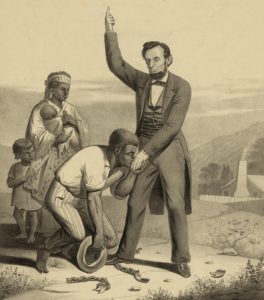 Abraham Lincoln signed the Compensated DC Emancipation bill into law about five months before he released his preliminary Emancipation Proclamation. But that wasn’t the first time he tried to free enslaved people in the Washington, D.C.
Abraham Lincoln signed the Compensated DC Emancipation bill into law about five months before he released his preliminary Emancipation Proclamation. But that wasn’t the first time he tried to free enslaved people in the Washington, D.C.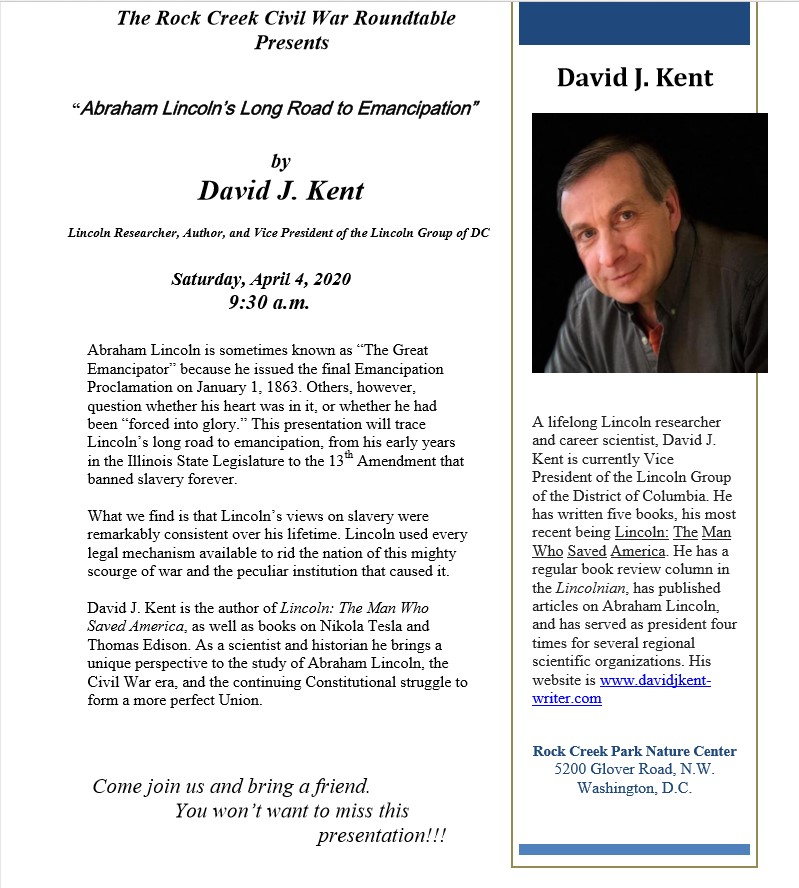
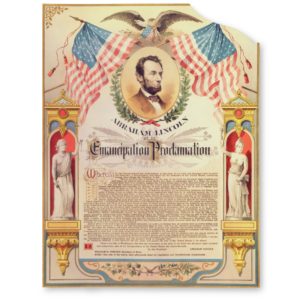 On August 26, 1863, Abraham Lincoln wrote a letter to James C. Conkling, his friend and political colleague in Springfield, explaining why the Emancipation Proclamation was necessary. In it he reveals the thought processes he went through to reach his decision. It was a much longer process than most people understood.
On August 26, 1863, Abraham Lincoln wrote a letter to James C. Conkling, his friend and political colleague in Springfield, explaining why the Emancipation Proclamation was necessary. In it he reveals the thought processes he went through to reach his decision. It was a much longer process than most people understood.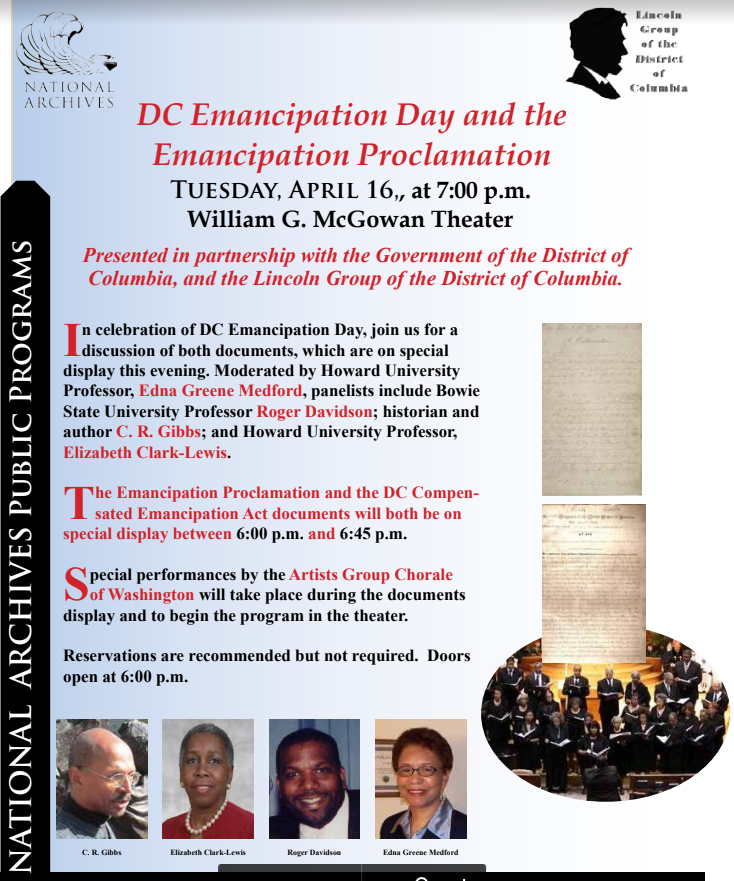
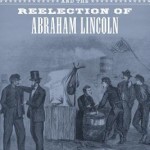

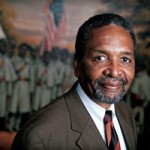 Dr. Frank Smith, Jr. will be the speaker at the
Dr. Frank Smith, Jr. will be the speaker at the 